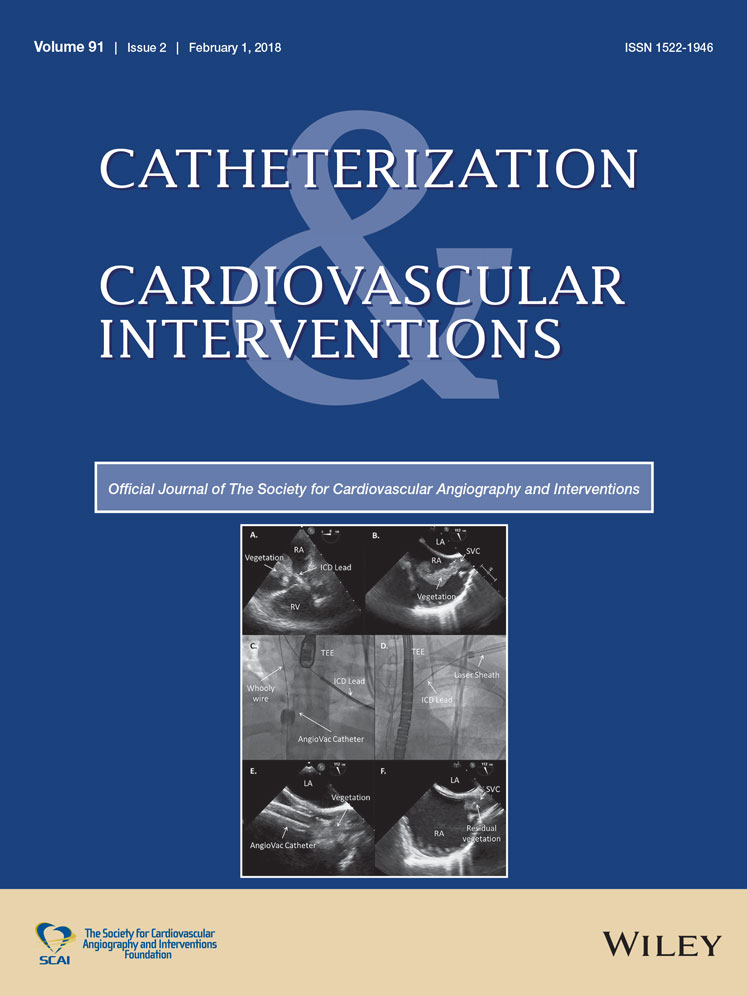A feasibility and safety study of intracoronary hemodilution during primary coronary angioplasty in order to reduce reperfusion injury in myocardial infarction
Funding information: NIHR Cardiovascular Biomedical Research Unit of Royal Brompton; Harefield NHS Foundation Trust.
Abstract
Objectives
We designed a pilot study to evaluate safety and feasibility of an inexpensive and simple approach to intracoronary hemodilution during primary angioplasty (PPCI) to reduce reperfusion injury.
Introduction
Early revascularization in acute myocardial infarction decreases infarct size and improves outcomes. However, abrupt restoration of coronary flow results in myocardial reperfusion injury and increased final infarct size. Dilution of coronary blood during revascularization may help reduce this damage. If proved effective, such an approach would need to be simple and suitable for widespread adoption.
Methods
Ten patients presenting with STEMI underwent intracoronary dilution with room temperature Hartmann's solution delivered through the guiding catheter during primary angioplasty (PPCI). Infusion of perfusate began prior to crossing the occluded artery with the guidewire, continuing until 10 min after completion of the balloon and stenting procedure. Infusion was briefly interrupted for contrast injection and pressure monitoring. The outcome measures were safety, including intracoronary temperature reduction and volume of intracoronary perfusate infused, and technical feasibility.
Results
There were no significant symptomatic, hemodynamic, ECG ST/T segment or rhythm changes observed during perfusate administration. The median (interquartile range) volume of perfusate administered was 550 mL (350–725 mL) and the median intracoronary temperature reduction observed was 3.4°Celsius. Myocardial salvage was 0.54 (0.43–0.65).
Conclusions
Transcatheter intracoronary hemodilution with room temperature perfusate during PPCI is feasible and appears safe. Such a strategy is simple and inexpensive, with potential to be widely applied. Further mechanistic and subsequent outcome powered studies are required to evaluate whether this strategy can reduce reperfusion injury in STEMI.
CONFLICT OF INTEREST
Miles Dalby:
Abbott Vascular Research, Daiichi Sankyo Lilly Research, Sanofi Research.
Astra Zeneca Consultancy, Eli Lilly Consultancy, Medtronic Consultancy, Boston Consultancy.




